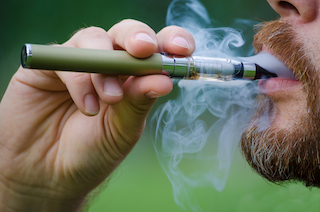With national attention focused on vaping and the fatal lung diseases that are being associated with them, let’s take at look at what vapes do and what they don’t do. This will serve as a parents guide to vaping.
how vaporizers work
When cannabis is heated to between 300-450 degrees Fahrenheit, cannabinoids like THC (and others) take flight, volatilizing into tiny airborne droplets that form vapor that looks like smoke. Vaporizers accomplish this by using a battery-powered heating element that cooks the cannabis oil or plant material. The oil is typically mixed with a substance like propylene glycol to decrease viscosity.
Vaporizers that can be used to smoke plant material differ from traditional vaporizers, which use convection (hot air) rather than combustion (heating element) to heat the plant material to the desired temperature. The purpose is to cause the THC and other cannabinoids to vaporize rather than burning the plant material. Now that we know how they work, let’s have a look at the components of a vaping device.

The tank
The tank typically holds the oil or other material and can be refilled, or a cartridge can be replaced if it’s intended for single use. Tanks are typically combined with the atomizer as a single unit. Tanks can be made of glass, polycarbonate plastic, or even stainless steel.
Atomizer
The device which actually heats the material is called the atomizer. It consists of a metal coil that comes into contact with the material, causing the droplets or “vapor” to form.
Sensors and software
Some vape pens turn on when the user inhales while others use a push button to initiate heating. They both require a sensor to determine when the user is inhaling. Embedded software controls temperature and other functions of the pen.
The battery
Vaporizers must provide enough current to power a tiny heater that reaches 400 degrees in seconds. Vaporizers use lithium-ion batteries that have high energy density, similar to your cellular phone. They are rechargeable and can come in various sizes to accommodate a multitude of work loads.
Modern day vaporizers are marketed as “3-in-1” kits. They are designed to vaporize dry plant material, E-Liquid, or wax. A consumer can buy one for as little at 10 dollars, or as much as 60 dollars which includes accessories like chargers, cases, and cleaners.
Users claim vape pens are a more healthy alternative to smoking thinking that vaporizers do not actually burn the plant material. They believe this eliminates the toxic substances that are usually found in tobacco or cannabis smoke, even though the products includes a number of substances, including THC, nicotine, synthetic cannabinoids or a combination of these. Recent events, however, have linked vaporizers to severe lung disease. As of October 2019 The Denver Post has reported over 1000 vaping related injuries and 18 deaths nationally.
what drugs can be vaped?
Most common drugs can be vaped. However, vaping is not an efficient method for drug users to vape certain drugs. In the photo below, you can see a vape tank that contains vape liquid mixed with methamphetamine. Although there are cases of people vaping methamphetamine, it is rare and inefficient. Another example is heroin. Heroin could be vaped, but a user is not going to do this. The vaporizer will use up too much of the heroin to be an efficient high. Even though it is not common, you should still be aware of it. Cannabis products are very popular to vape and it is these products that are causing the most health emergencies.

how to keep your kids from vaping
You need to talk to your kids about vaping just like you would about abstaining from cigarettes, marijuana and other drugs. If you want to know more about talking to your children about these subjects, I have written an article on it and I have a webinar online that you can view.


